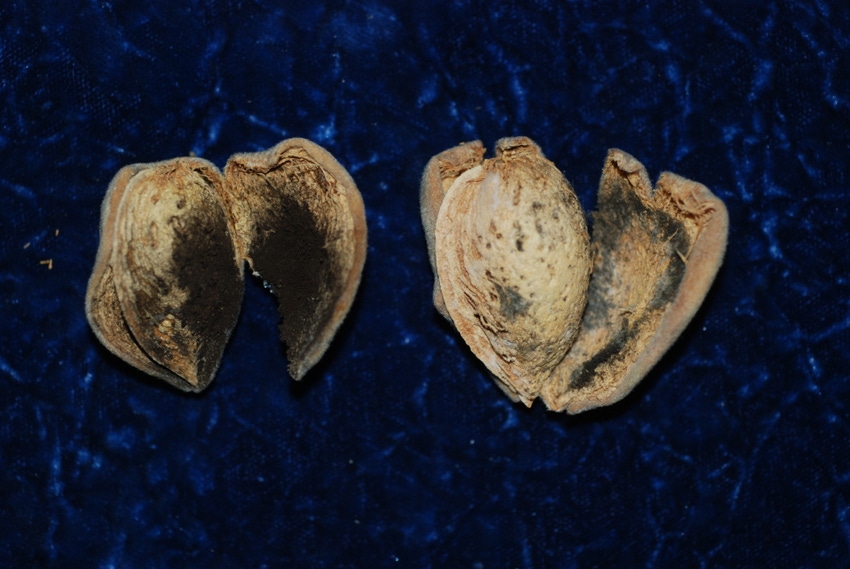
Research is underway to find control measures for Aspergillus niger-induced hull rot in almonds. This opportunistic pathogen is common in the environment, but is not typically associated with this tree nut.
The fungus Aspergillus niger is ordinarily found on decaying pistachio nuts in California. The pathogen does not produce aflatoxins unlike the two closely-related fungi Aspergillus flavis and Aspergillus parasiticus.
Brent Holtz, University of California Cooperative Extension (UCCE) farm advisor at San Joaquin County, reported back in September that samples of hull rot-infected nuts were sent to UC plant pathologist Dr. Themis Michailides at the Kearney Research and Extension Center at Parlier.
Aspergillus niger was isolated from 88 percent of the samples collected. The remaining 12 percent of the diseased nuts were infected with Rhizopus stolonifer, a typical bread mold normally associated with hull rot in almonds.
Dr. Mohammad Yaghmour, UCCE farm advisor at Kern County, recently confirmed that Aspergillus niger-induced hull rot was also found in his county this year. Yaghmour is conducting research into control measures for hull rot associated with this pathogen.
Irrigation management has been shown to reduce hull rot, Holtz says, but it’s unknown if mild water stress will reduce the hull rot caused by Aspergillus niger in the same way it helps with hull rot induced by the more common pathogens.
Hull rot typically affects vigorous, heavily cropped, well watered, and fertilized five-to-ten-year-old trees. Nonpareil is usually the most severely affected cultivar though the Sonora and Kapareil varieties can also sustain extensive damage.
The association of hull rot with heavy crops may also be a matter of numbers – the more infected fruit means more toxins produced which causes more leaf and shoot death.
There are no known control measures once hull rot infections are visible. Growers’ orchards with a history of hull rot should have a control strategy in place to reduce the risk of outbreaks. Hull rot infections occur during the start of hull split.
UCCE farm advisor David Doll at Merced County believes Rhizopus is the primary pathogen for hull rot in the southern San Joaquin Valley. A similar pathogen, Monilinia, is more common in Sacramento Valley almond orchards. These pathogens produced fumaric acid which is transported to the leaves and shoots and responsible for dieback.
Hull rot symptoms include a rotted area on the hull after split. Dense masses of spores produce dark powdery material between the hull and shell. The pathogens cannot penetrate the hull until after the split. Leaves near the hull infection may also become infected as well as the spurs and shoots.
The first orchard symptoms may be clusters of dead leaves surrounded by healthy foliage. Kernels are not usually harmed. Yield losses are incurred the following year due to the death of fruiting wood. Infections can cause nuts and leaves to stick to branches, providing overwintering sites for the Navel orangeworm pest.
According to Holtz, there were subtle differences in the infections caused by Aspergillus niger in the Supareil almond variety with hull rot symptoms. The infections included blighted shoots and stuck leaves, but the fungal sporulation did not look typical, the farm advisor said.
In addition, many of the larger blighted shoots showed signs of life even after defoliation while other blighted shoots pushed new leaves in September.
Earlier research into hull rot prevention suggests that inflicting mild water stress on trees during early hull split could reduce the incidence of the disease. Mild water stress, said Holtz, does not negatively impact long-term productivity.
There are higher incidences of hull rot on windfall nuts. Spore loads may build up on pollinators. Orchards with a mix of cultivars that extend hull split can make the disease more difficult to manage.
About the Author(s)
You May Also Like




